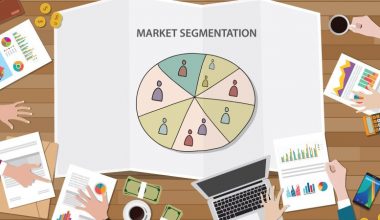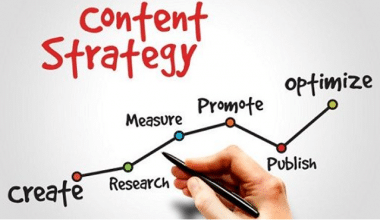Paid media, or advertising, is now a way for businesses and creators to gain client interest through social and search platforms that include millions of postings, not just newspaper or television advertisements. In a market that is getting increasingly crowded, it helps them break through and generate interest, leads, and sales. Read on to learn more about paid media, the strategies, marketing, and social paid media, and also the example to assist you in developing a stronger digital marketing strategy.
Paid Media
Paid media refers to any type of advertising that you have to pay for. This could include both traditional media like radio and TV ads and online media like Google AdWords and Facebook ads. This is one of the methods companies use to market their content, and it includes sponsored social network posts, display advertisements, paid search results, video ads, pop-ups, and other promoted multimedia. Sponsored media can be an effective way to broaden your brand’s reach, increase views, and improve traffic flow. In the end, when you sponsor content, you can reach people who might not have seen you otherwise.
Paid media may appear archaic or unnecessary at first glance. After all, one of the best aspects of web marketing and social media is that they allow you to escape the traditional pitfalls associated with paid advertising by presenting your brand to new and interesting people. Although this is the case, paid media still has a place and can be used in conjunction with earned and owned media to support the expansion of an online business. It is one of the fastest ways to get people to visit your site. Sponsored media is a good approach to unlocking doors that would otherwise remain closed.
Example of Paid Media
The following are examples of paid media
#1. Facebook
Facebook is an example of paid media. First, you can try out paid ads that show up in the news feeds of specific users. Most of the time, these are one-space ads. You can also buy carousel ads, which are a series of images that can be swiped through in one ad space. This also lets advertisers tell better stories and show more products.
Aside from the homepage, there are many other places to put ads, such as Facebook Marketplace, Facebook Suggested Video, the Facebook Right Column, and Messenger Inbox.
Facebook ads are often very well-suited to your marketing goals. You start by setting your goal, choosing your ideal audience, deciding where to put your ads, setting a budget, and so on, to increase the chances of attracting your target market.
#2. LinkedIn
Similar to how Facebook does it, LinkedIn is also an example of paid media. Linkedln have Sponsored InMail, which allows advertisers to
use their messaging feature to send content to specific groups. The sponsored message will appear in the user’s chat box at the bottom of the screen, calling her attention to the offer and improving her chances of getting noticed. Sponsored messages only appear when the user is active on LinkedIn.
Social Paid Media
After setting the goal of their ads, advertisers choose the people they want to reach, bid on how much each interaction will cost, and choose which tweets to sponsor. Promoted tweets are special posts or placements on social media sites that are paid for by advertising. Paid social strategies are often used to get more followers, clicks, engagements, and views by targeting the right people based on their demographics, location, interests, and other factors.
For many brands, products, and services, it’s a good idea to put money into paid social media.If you’re asking, “Should I bother with social paid media?” consider how many individuals buy online each year, particularly after seeing social ads, and how much money is spent on internet advertising each year.
Paid social may seem hard at first, and it may seem hard again every time a new feature comes out, but it’s worth the trouble! Those who use it say they get a much larger audience, more and better conversions, higher click-through rates, and a better return on their advertising budgets. Access to advanced analytics also helps them learn more about what their audiences want.
Examples of Social Paid Media
In-feed ads, boosted posts, influencer media, and display ads are examples of social paid media advertising. We go through each of these four types in depth below, but each social media site also has a variety of particular ad formats. Facebook’s ad guide looks to give ten different ad format possibilities, with additional alternatives in each category if you dig further. Hence, to assist you in finding what you’re looking for, we’ve put together a one-stop-shop guide to social media paid media ad formats.
#1. In-Feed Ads
These ads look like normal posts on a user’s Facebook, Instagram, Twitter, LinkedIn, Snapchat, or Pinterest homepage feed or Story reel. They are usually marked as “sponsored” or “promoted,” and they are normally posted by a social media channel with a brand name. They can be picture ads, video ads, collection ads, carousel ads, lead form ads, and more.
#2. Boosted Posts
Businesses often use social media marketing strategies that use both free and paid methods. On platforms like Facebook or Instagram, organic posts that do well can be “boosted.” A paid budget will be added to the organic post, often to help it reach new audiences.
#3. Influence Media
Social media influencer marketing is rising. Influencers gain a following organically and partner with brands to promote products and services. Paid media is user-generated content (UGC) where the influencer is given money or a product in exchange for their work.
Influencer postings can appear organic on social media without the “sponsored” or “promoted” subheadings. Followers trust influencers to disclose product sponsorships when their postings appear natural.
Consider the contrast between an Instagram ad for a brand’s eyeliner and Kim Kardashian tweeting about her “favorite new eyeliner”! Kim must include #sponsored in her post to indicate that she was paid to promote the eyeliner.
#4. Display Ads
People usually mean search engine ads and pay-per-click ad campaigns when they say “display ads.” But you can also see display ads on social media. Facebook and LinkedIn have sidebar ads for display ads, and Twitter has promoted trends and promoted hashtags for display ads. Instagram and Snapchat both have their own ways of showing ads on the “Discover” page. Display ads on social media are usually less complicated than in-feed ads, and they only want you to click through to a landing page on another site.
Paid Media Strategies
The strategies for paid media are like recipes. You can change the ingredients to your liking, but if you forget one key ingredient, the whole thing will taste different. Therefore, these strategies are important for businesses because they give them a way to promote their content and raise brand awareness quickly.
The following are the strategies of paid media.
#1. Paid Media Strategies for Improving Brand Recognition
Paid search is a great way to get people to know your brand because it puts you in front of your target market right when they are looking for information about their issues and potential remedies.
Display advertising is a great way to get people to learn more about possible problems and how to solve them before they even make a decision. Display advertising is a great way to get people to learn more about possible problems and how to solve them before they even make a decision.
Then, retargeting and paid social media could be used to make your services better known to people who have already heard of your brand.
#2. Paid Media Strategy to Build Brand Recall
Display advertising and paid social media are extremely effective strategies for increasing brand memory. Both can be used to reach very specific groups of people who don’t know about their problem, let alone your solution or brand.
When customers look for more information online, brand-specific sponsored search ads can boost the credibility of your brand. Yes, display and social ads can make people look for your brand name. Of course, you’ll want to appear when those searches occur. Paid search ads can also prevent competitor brands and product names from dominating the paid search results. In the same way, bidding on competitor brands is a common way to show that your brand could be an alternative.
Frequency is the key to remembering things. Retargeting ads are still a great way to keep in touch with people who have shown some interest in your business and keep your brand in their minds.
#3. Paid Media Strategy to Amplify Social Media Following
One of the most reliable ways to get more people to follow you on social media is to pay for it. With hyper-targeted messaging on social media platforms, you can reach more people who might buy your product. They also let you get back in touch with people who saw your brand on social media but haven’t followed you or done anything else to convert.
Paid social media can also be combined in different ways with display and paid search ads. One way is to offer rewards for using social media on landing pages that are linked to many other paid media channels. Think about how many people find it easier to use social media than to share their contact information.
#4. Paid Media Strategy to Convert Qualified Visitors
Retargeting visitors and contacts is effective. With retargeting, you can reach out to visitors and contacts wherever they are online for a few cents. Retargeting complements paid media channels. Paid search, social media, and display ads can help people remember your brand, and retargeting is a cheap way to remind visitors who didn’t buy from you about your services. Retargeting via social media advertising is possible.
Display advertising can help early decision-makers understand more about their problems and how to solve them.
Paid Media Marketing
Paid media and inbound marketing are not in competition with one another; rather, they work effectively together to complement one another. Blog posts, pillar pages, and content that requires a password are all great additions to the many types of commercial media. Display ads, paid social media, and sponsored searches are all good ways to spread the word about good content. Retargeting can be used to entice organic visitors back to your website so that you can provide them with more of the material that drew them there in the first place. By using a full-fledged paid media plan, you can make sure that your customers keep your brand in mind throughout the whole buyer’s journey.
What Are Examples of Paid Media?
Google Ads, ads on social media, and more traditional options like TV commercials, print ads, and billboards are all good examples.
Is TikTok Paid Media?
TikTok Promote is a paid feature that allows you to market your video content by selecting a goal (video views, website visits, or new followers).Before you start marketing, decide who you want to reach, set a budget, and figure out how long your ad will be.
What Are the Benefits of Paid Media?
You can reach out to people based on their interests, age, gender, and even what they’ve bought in the past. This means that you can advertise to the right people, which increases your chances of getting a good return on investment. Lastly, paid media is a great way to increase your online visibility.
What Is PPC vs Paid Media?
PPC is the practice of placing advertising in search results or on other websites in order to drive more visitors back to the advertiser’s website. Paid advertising is a business model that uses several formats, like a social media ad or a search engine ad, to target customers online based on their interests or intent.
How Do I Start Paid Media?
- Begin with your goal in mind.
- Know your audience thoroughly.
- Choose the appropriate social media platform
- Choose who you want to target
- Set up your retargeting tools
- Choose the best ad format
- Create your campaign content.
- Set up a budget.






